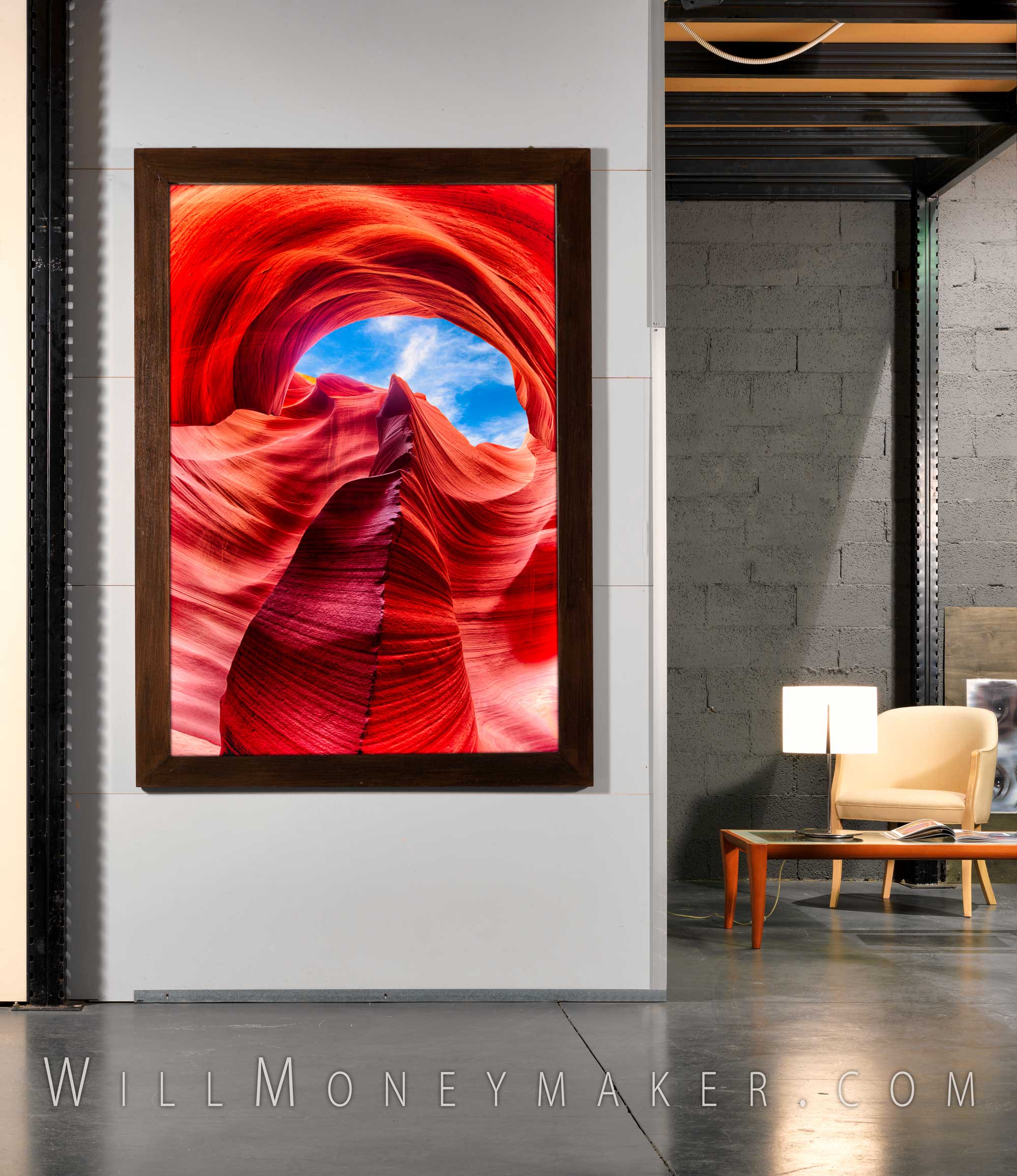Prints: What to do with them? The obvious answer is to put them on display, of course! That’s what most people do with the fine art prints that they buy. But you know what? I’ve also run into people who won’t invest in a fine art photograph—and the reason why has a lot to do with the fickle nature of human nature.
The fact is, there are tones of people out there who love art. In fact, I’d hazard a guess that you’d be hard-pressed to find someone out there who won’t take at least a passing interest in a beautiful photograph. Most people, however, don’t spend much money on prints and some even refuse to buy prints for a couple of reasons: Because they are expensive (and rightfully so when you consider the work that goes into them), and because people change.
What happens when you invest a thousand or several thousand dollars on a beautiful photograph that you fall in love with? You’ll take it home, of course, and put it on display. Weeks and months will go by. Eventually, the image loses its metaphorical luster. You’ve looked at it for so long that it just doesn’t hold the charm that it once did.
Now you want something new. A refresh, a new print that captures your interest just as that first one did.
This is a process that can repeat a lot. Some of us are changeable enough that we’d love to see different prints hanging in our living rooms to match the different seasons. We may go to galleries one weekend, fall in love with a particular print, and then a month later, go to galleries again and fall for a completely different print.
For many of us, there are just way too many photographs we’d love to own—and not nearly enough wall space to display them. If we invested in them, the majority will end up gathering dust in a closet somewhere.
So we don’t invest, because we know this about ourselves. We know that our tastes in art will change, or that we desire to be able to rotate decor often without worrying about how to protect precious prints in storage. We miss out on displaying and enjoying art not because we don’t like art, but rather, because we love it too much. So much that we can’t possibly display even a fraction of what we love.
Is there a solution to this conundrum? I think so—but unfortunately, current technology makes this tricky. Digital technology is the solution with things like digital picture frames. Except, to be honest, digital picture frames seem perhaps a little on the disappointing side.
Many years ago, when these devices first came to market, there was a lot of excitement. It wasn’t that those early digital picture frames were particularly amazing. Most were small, relatively low-resolution devices. But for many of us, they held promise. We’ve watched what has happened over the years with camera technology, televisions, and computers. In a relatively short span, camera technology has come leaps and bounds from primitive digital cameras to the stunning flagship models we have today. The same happened with the flatscreen TVs that grace nearly every American home today. Not so long ago, flat-screen TVs were new, novel, and not nearly as good as they are today.
But we were excited for the new tech because we knew it would do what tech usually does: It would get better, and rapidly, too.
So with digital picture frames, I think many of us were excited because we assumed that before too long, we’d be able to buy relatively inexpensive frames capable of displaying 20×30 images at high resolutions.
Well, with digital picture frames, that just didn't really happen. These days, there are a lot of great products in and around the 8×10 size, which is perfect for an end table display, but options for that big over-the-sofa print are fairly limited.
Still, there are options. There are still digital solutions available for those of us with the desire to own too much art. Those widescreen TVs I mentioned just a little bit ago are one example. With today’s smart TVs, it’s pretty easy to use them to display images. If you’re not using the TV, why not stream an image to it for display, or create a slideshow that it can run?
Monitors are another option. You can get relatively inexpensive—and fairly large—LCD monitors that can easily be mounted on walls. Then, you can stream all the images to it that you like. Of course, there are still limits to digital displays, even TVs and monitors. And it does take some out-of-the-box thinking to turn these items into devoted art displays. But I think it’s important to examine how we can bring more digital art into our households. The more ways we have to display, the more people will be tempted to purchase images for use on their displays. We could open up entirely new markets that didn’t exist in large part because some of us hesitate to invest in prints when we know we’ll never have enough wall space to display all the analog pictures we love.
Now go and enjoy the beauty of God’s creation through your lens.


